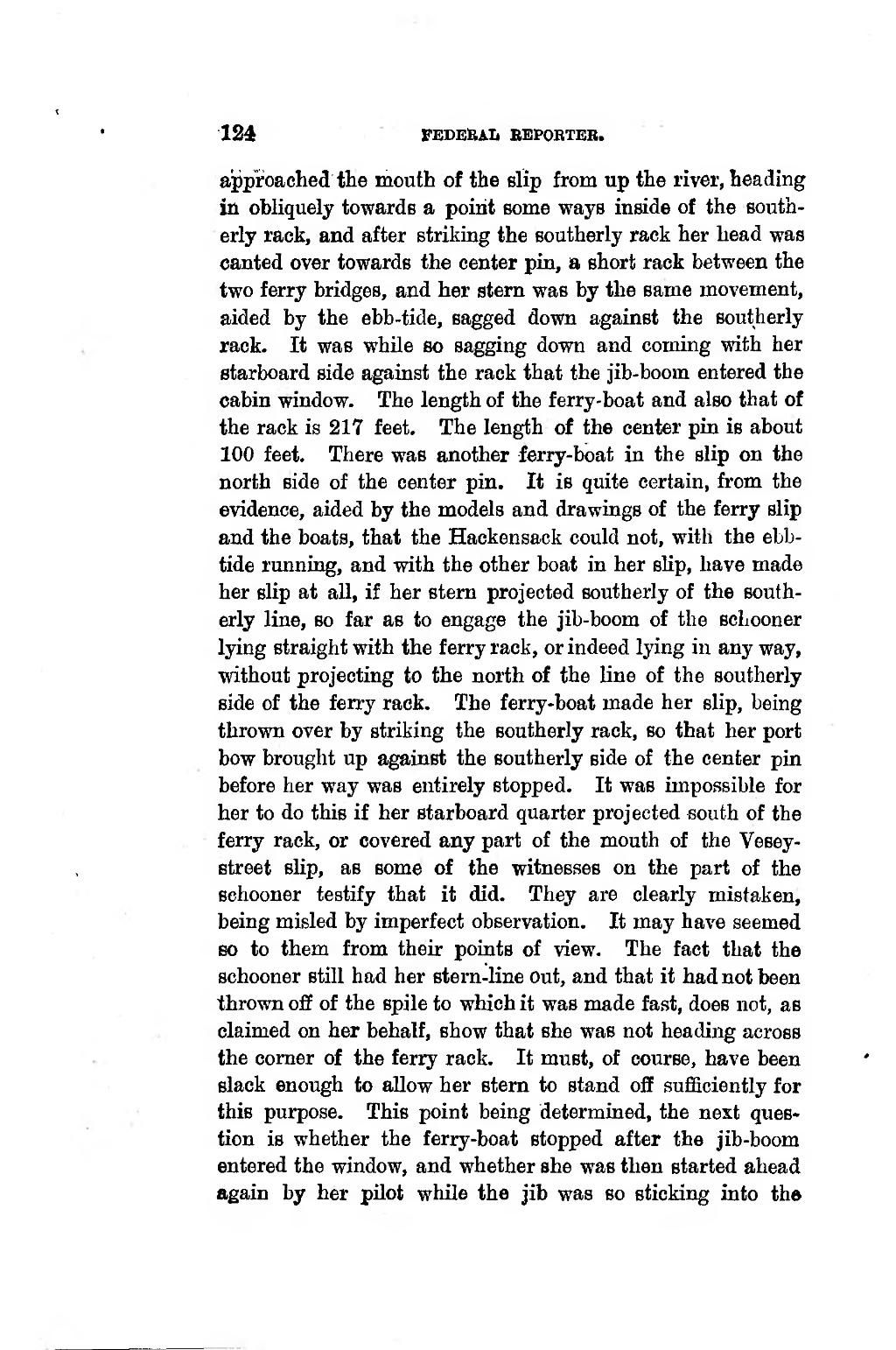124 FEDERAL EBPOBTEB. �approached the mouth of the slip from up the river, heading in obliquely towards a point some ways inside of the south- erly rack, and after striking the southerly rack her head was canted over towards the center pin, a short rack between the two ferry bridges, and her stern was by the same movement, aided by the ebb-tide, sagged down against the southerly rack. It was while so sagging down and coming with her starboard side against the rack that the jib-boom entered the cabin window. The length of the ferry-boat and also that of the rack is 217 feet, The length of the center pin is about 100 feet. There was another ferry-boat in the slip on the north side of the center pin. It is quite certain, from the evidence, aided by the models and drawings of the ferry slip and the boats, that the Hackensack could not, with the ebb- tide running, and with the other boat in her slip, have made her slip at ail, if her stern projected southerly of the south- erly line, so far as to engage the jib-boom of the schooner lying straight with the ferry rack, or indeed lying in any way, without projecting to the north of the line of the southerly side of the ferry rack. The ferry-boat made her slip, being thrown over by striking the southerly rack, so that her port bow brought up against the southerly side of the center pin before her way was entirely stopped. It was impossible for her to do this if her starboard quarter projected south of the ferry rack, or covered any part of the mouth of the Vesey- street slip, as some of the witnesses on the part of the schooner testify that it did. They are clearly mistaken, being misled by imperfect observation. It may have seemed so to them from their points of view. The fact that the schooner still had her stern-line out, and that it hadnot been thrown olï of the spile to which it was made fast, does not, as claimed on her behalf, show that she was not heading across the corner of the ferry rack. It must, of course, bave been slack enough to allow her stern to stand oflF sufficiently for this purpose. This point being determined, the next ques- tion is whether the ferry-boat stopped after the jib-boom entered the window, and whether she was then started ahead again by her pilot while the jib was so sticking into thd ����
